Unsolved Chess Mysteries (14)
By Edward Winter
Endgame surprise
C.N.s 2850 and 2866 discussed a remarkable move played in a correspondence
game between Tuffli and Rimathé:
The game continued 50…Rg4 51 Be5 Rxg5 and Black won.
Source: pages 10 and 108 of Schachtaktische Bilder by E. Voellmy (Basle
and Leipzig, 1935). A little more of the game was supplied on page 15 of the
January 1913 Schweizerische Schachzeitung, which reported that it won
the second brilliancy prize in a tournament (held from 6 July 1910 to 13 August
1912):
Can the complete game-score be found?
Resignation in winning position
In C.N. 2202 Richard Forster (Zurich) drew attention to discrepancies concerning
this position:
White played 1 Qxf6 and Black resigned, missing the winning move 1…Qg4.
Page 68 of Schach by H. Ranneforth (Leipzig, 1936) had the heading ‘Ahues-Wolf’,
whereas page 53 of Paul Tröger’s Danke Partner – für Deinen
Fehler! (Stuttgart, 1989) said it was Ahues-Hans Müller, Berlin, 1920.
In C.N. 3918 we noted that the position was given, courtesy of the Deutsche
Schachblätter, on page 111 of the Schweizerische Schachzeitung, July
1923. The heading was vague: ‘Aus einer von Meister Ahues vor Jahren
gespielten Partie’.
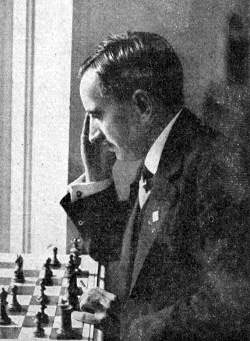
Carl Ahues
A Harrwitz seesaw?
An alleged game conclusion discussed in C.N. 3301 was labelled ‘D. Harrwitz
Date? Before 1858’ on page 430 of the November 1913 issue of La Stratégie:
White to move and win: 1 Rxg7 Rxd1 2 Rxe7+ Kg8 3 Rg7+ Kh8 4 Rxd7+ Kg8 5 Rg7+
Kh8 6 Rxc7+ Kg8 7 Rg7+ Kh8 8 Rxb7+ Kg8 9 Rxb8+ Kh7 10 Rh8+ Kg6 11 Rg8+ Kh7+
12 Rg7+ Kh8 13 Rxg5+ Kh7 14 Rg7+ Kh8 15 Rxa7+ Kg8 16 Rxa6 Rxf1+ 17 Kg2.
What more is known about this specimen of the chess
seesaw?
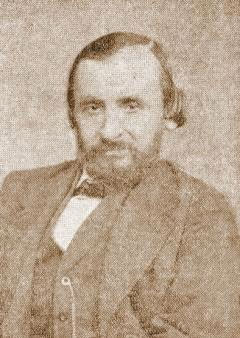
Daniel Harrwitz
A Bernstein ending
Page 108 of Creative Chess by Amatzia Avni (1991 and 1997 editions)
had a position headed ‘Dr O. Bernstein-Amateur, Stockholm, 1906’:
In this seemingly hopeless situation White is said to have played 1 Rgd6 (If
1 Ra7 d2 2 Rgxg7 Rg8 and Black wins.) 1...d2 2 Rac6 Rb8 3 Rb6 Ra8 4 Ra6 Drawn.
Did this occur in a game? When the position appeared on page 1610 of L’Echiquier
of 9 April 1932 it was given as a study, published in ‘Chakmatnoe
Obozzenic 1906’ (i.e. Shakmatnoe Obozrenie).
Alexander v Marshall
As mentioned in C.N. 3508, this position was featured on page 166 of L’oeil
tactique: l’entraînement à la combinaison by E. Neiman (Paris, 2003),
merely labelled ‘Alexander-Marshall 1928’. The book notes that after
1 Rf4 exf4 2 gxf4 dxc3 Black would control g1, and the winning line is therefore
given as 1 Na4 bxa4 2 Rf4 exf4 3 gxf4, after which 4 Rg1+ leads to mate.
An innocent reader might assume that the players were C.H.O’D. Alexander
and F.J. Marshall. That, indeed, is the impression offered by various later
editions of Kombinationen by K. Richter (see position 297 and the index
references). Already in the first edition (Berlin, 1936) Richter gave the position
(see page 114), stating that the game went 1 Rf4 exf4 2 Na4 f3+ 3 Nxf3 Qa7 4
Ng5 fxg5 5 f6 Ne6 6 Bxe6 fxe6. As a caption Richter put ‘Meisterturnier
Cambridge 1928’, an event unknown to us. C.H.O’D. Alexander
went up to Cambridge University that year, but was he necessarily the Alexander
in question? Other players active around that time were F.F.L. Alexander and
L. Alexander, and there was also an E.T. Marshall; on page 162 of the April
1932 BCM all three of them were listed as members of the Lud-Eagle team.
At the moment no information can be offered about where the game was played
or by whom. Nor has the complete score been found.
Sufficient mating material
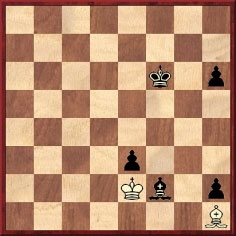
G.H. Mackenzie v N.N., New York, circa 1888.
Instead of accepting the draw, Black tried to force matters with 1…h5
2 Kf3 Kg5 3 Ke2 Kh4 4 Kf3 Kh3 5 Ke2 h4.
Despite having only a bishop, White naturally gave mate in two moves, beginning
with 6 Kf3.
Source: La Revista de Ajedrez (Havana), 27 February 1889, page 42. The
magazine stated that the game was played ‘during the past year’.
This ending was presented in C.N.s 1253 and 2236, but nothing more has yet been
found out.
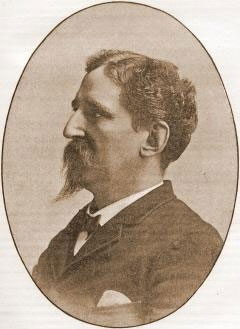
George Henry Mackenzie
Nimzowitsch snippet
P. Wenman (1891-1972) was not a careful writer, so it was with all due wariness
that C.N. 2526 reproduced a position from pages 83-84 of his book Learn to
play Chess (Leeds, 1946):
This is said to have occurred in an offhand game between N.N. and Nimzowitsch
at St George’s Restaurant, London in 1927, with the following continuation:
1 Rxf6 gxf6 2 Nc3 Bxg3 3 hxg3 Qxg3 4 Qf1 Rag8 5 Nd5
5...Nd4 6 Nxf6+ Kc6 7 Nxg8 Rxg8 8 Qf6+ Kb5 9 a4+ Kb4 10 c3+ Kb3 11 Qxf7+ c4
12 Qf2 Qxf2+ 13 Kxf2 Nc2 14 d4 cxd3 15 Ra3+ Nxa3 16 bxa3 Kc2 17 White resigns.
Can any corroboration or further details be found?
A Capablanca draw
In C.N. 2748 Javier Asturiano Molina (Murcia, Spain) wrote:
‘What information is available about the mysterious game Edward
Lasker v Capablanca, Berlin, 1911? The final moves of this “unknown”
game (a draw, but Capablanca could have won) were given by Edward Lasker in
his book Chess Secrets I Learned from the Masters (page 131) and were
also discussed in the 8/1995 New in Chess (page 82). It is absent from
the various collections of Capablanca’s games, but has the complete
score ever been published?’
The position in Lasker’s book is as follows:
Now Lasker (White) continued 1 f8(Q) Rxf8 2 Rxf8 e2 (2…Kb7!) 3 Kc6 Ka7
4 Rf7+ Ka6 5 Rf8 Ka5 6 Kc5 Ka4 7 Rf4+ Kb3 8 Rf3+ Kc2 9 Rxf2 Drawn. Had this
drawing motif already occurred before 1911?
Lasker wrote in his book that Capablanca ‘thrilled me by his very gracious
consent to play an individual game with me’, but did not indicate the
rate of play. We have found nothing about their meeting in such contemporary
magazines as the Deutsche Schachzeitung and Deutsches Wochenschach.
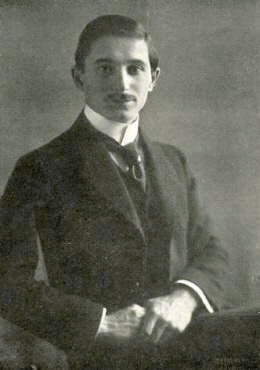
Edward Lasker
Whose back-rank tricks?
Play went 1...Rb2 2 Rd1 Qa8 3 Qe4 Rb8 4 Rb1 c2 5 Rxb8+ Qxb8 6 a7 Qc8 7 a8(Q)
c1(Q) 8 Qe8+ and mate next move.
This ending was published on page 130 of Taktika Moderního Šachu
by L. Pachman (Prague, 1962) with a caption no more informative than ‘Alapin-H.’.
However, we noted in C.N. 3359 that the same conclusion was on page 365 of the
September 1904 issue of the Belgian magazine Revue d’échecs, with
the following information: ‘Fin d’une partie jouée entre un fort
joueur de Butler, M. H.A. Stauffer (Blancs) et un amateur de Boston (Noirs)’.
The magazine’s source was the Brooklyn Daily Eagle.
A Fahrni pawn ending
This position was examined in C.N.s 2425 and 2458:
White wins by 1 Kd5 Kc8 2 Kd4 Kd8 3 Kc4 Kc8 4 Kd5 Kc7 5 Kc5 Kc8 6 Kb6, etc.,
a model example of triangulation which appears in many endgame books. The caption
is usually ‘Fahrni-Alapin’, sometimes with a date between 1909 and
1917 and occasionally with a mention of Munich. Although the exact occasion
and complete game have yet to be found, at a tournament in Munich in June 1909
Fahrni scored +3 –0 =1 against Alapin. When Fahrni himself gave the position,
on page 15 of his book Das Endspiel im Schach (Leipzig, 1917), he did
so with just the vague heading ‘From a game Fahrni-Alapin’:
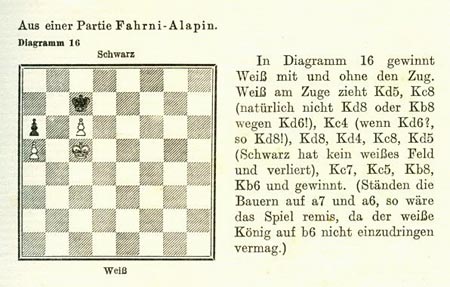
The position after 1 Kd5 Kc8 occurred in Fiebig-Tartakower, Barmen, 1905, but
White missed the win, and the game was agreed drawn after 59 Kd6 Kd8 60 Kd5
Kc8. (Source: Barmen, 1905 tournament book, page 250.) A similar ending arose
in W. Lange-C. Carls, Aachen, 1934. White’s king was on e2 and he had
a pawn at h3; Black had his king on e4 and pawns at f4 and h4. The game ended:
1…f3+ 2 Kf1 Kf5 3 Ke1 Ke5 4 Kf1 Ke4 5 Ke1 Ke3 6 Kf1 f2 and wins. (Source:
Schackvärlden, July 1934, page 254.) In more recent times, a notable
example of the Fahrni ending has been Alburt-Kasparov, Daugavpils, 1978.
On page 82 of the March 1911 La Stratégie the position was given, in
an item which mentioned neither Fahrni nor any other player. Michel A. Tossizza
gave an extract from his 1910 book Etude explicative d'une partie d'échecs.
Le Gambit Evans. What more can be discovered about the Fahrni position?
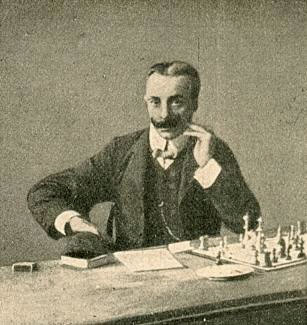
Hans Fahrni
Submit information
or suggestions on chess mysteries
 Edward
Winter is the editor of Chess
Notes, which was founded in January 1982 as "a forum for aficionados
to discuss all matters relating to the Royal Pastime". Since then around
5,000 items have been published, and the series has resulted in four books by
Winter: Chess
Explorations (1996), Kings,
Commoners and Knaves (1999), A
Chess Omnibus (2003) and Chess
Facts and Fables (2006). He is also the author of a monograph
on Capablanca (1989).
Edward
Winter is the editor of Chess
Notes, which was founded in January 1982 as "a forum for aficionados
to discuss all matters relating to the Royal Pastime". Since then around
5,000 items have been published, and the series has resulted in four books by
Winter: Chess
Explorations (1996), Kings,
Commoners and Knaves (1999), A
Chess Omnibus (2003) and Chess
Facts and Fables (2006). He is also the author of a monograph
on Capablanca (1989).
Chess Notes is well known for its historical research, and anyone browsing
in its archives
will find a wealth of unknown games, accounts of historical mysteries, quotes
and quips, and other material of every kind imaginable. Correspondents from
around the world contribute items, and they include not only "ordinary
readers" but also some eminent historians – and, indeed, some eminent
masters. Chess Notes is located at the Chess
History Center.
Articles by Edward Winter
-
Edward Winter presents: Unsolved Chess Mysteries (1)
14.02.2007 – Since Chess
Notes began, over 25 years ago, hundreds of mysteries and puzzles have
been discussed, with many of them being settled satisfactorily, often thanks
to readers. Some matters, though, have remained stubbornly unsolvable –
at least so far – and a selection of these is presented here. Readers are
invited to join
in the hunt for clues.
-
Edward Winter presents: Unsolved Chess Mysteries (2)
12.03.2007 – We bring you a further selection
of intriguing chess mysteries from Chess
Notes, including the origins of the Marshall Gambit, a game ascribed
to both Steinitz and Pillsbury and the bizarre affair of an alleged blunder
by Capablanca in Chess Fundamentals. Once again our readers are invited
to join the hunt
for clues.
-
Edward Winter presents: Unsolved Chess Mysteries (3)
27.03.2007 – Recently-discovered photographs
from one of Alekhine’s last tournaments, in Spain in 1945, are proving baffling.
Do they show that a 15-move brilliancy commonly attributed to Alekhine is
spurious? And do they disprove claims that another of his opponents was
an 11-year-old boy? Chess
Notes investigates, and once again our readers are invited to join
in the hunt for clues.
-
Edward Winter presents: Unsolved Chess Mysteries (4)
10.04.2007 – What would have happened if the
score of the 1927 Capablanca v Alekhine match had reached 5-5? Would the
contest have been declared drawn? The affair has been examined in depth
in Chess Notes.
Here chess historian Edward Winter sifts and summarizes the key evidence.
There is also the strange case of a fake photograph of the two masters.
Join
the investigation.
-
Edward Winter presents: Unsolved Chess Mysteries (5)
30.04.2007 – We bring you a further selection
of mysteries from Edward Winter’s Chess
Notes, including an alleged game by Stalin, some unexplained words attributed
to Morphy, a chess magazine of which no copy can be found, a US champion
whose complete name is uncertain, and another champion who has vanished
without trace. Our readers are invited to join
in the hunt for clues.
-
Edward Winter presents: Unsolved Chess Mysteries (6)
19.05.2007 – A further miscellany of mysteries
from Chess Notes is presented
by the chess historian Edward Winter. They include an alleged tournament
game in which Black was mated at move three, the unclear circumstances of
a master’s suicide, a chess figure who was apparently unaware of his year
of birth, the book allegedly found beside Alekhine’s body in 1946, and the
chess notes of the poet Rupert Brooke. Join
in the hunt for clues.
-
Edward Winter presents: Unsolved Chess Mysteries (7)
02.06.2007 – The chess historian Edward Winter
presents another selection of mysteries from Chess Notes. They include an
alleged game by Albert Einstein, the origin of the Trompowsky Opening, the
termination of the 1984-85 world championship match, and the Marshall brilliancy
which supposedly prompted a shower of gold coins. Readers are invited to
join in the hunt
for clues.
-
Edward Winter presents: Unsolved Chess Mysteries (8)
In this further selection from Chess
Notes historian Edward Winter examines some unauthenticated quotes,
the Breyer Defence to the Ruy López, the origins of the Dragon Variation,
the contradictory evidence about a nineteenth century brilliancy, and the
alleged 1,000-board exhibition by an unknown player. Can our readers help
to solve these new
chess mysteries?
-
Edward Winter presents: Unsolved Chess Mysteries (9)
Why did Reuben Fine withdraw from the 1948 world championship?
Did Capablanca lose an 11-move game to Mary Bain? Was Staunton criticized
by Morphy for playing ‘some devilish bad games’? Did Alekhine
play Najdorf blindfold? Was Tartakower a parachutist? These and other mysteries
from Chess
Notes are discussed by Edward Winter. Readers are invited to join in
the hunt
for clues.
-
Edward Winter presents: Unsolved Chess Mysteries (10)
15.07.2007 – Did Tsar Nicholas II award the ‘grandmaster’
title to the five finalists of St Petersburg, 1914? What connection exists
between the Morphy family and Murphy beer? Can the full score of one of
Pillsbury’s most famous brilliancies be found? Did a 1940s game repeat
a position composed 1,000 years previously? Edward Winter, the Editor of
Chess
Notes, presents new
mysteries for us to solve.
-
Edward Winter presents: Unsolved Chess Mysteries (11)
01.08.2007 – Did Alekhine attempt suicide in 1922? Why is
1 b4 often called the Hunt Opening? What are the origins of the chess proverb
about the gnat and the elephant? Who was the unidentified figure wrongly
labelled Capablanca by a chess magazine? Does Gone with the Wind
include music composed by a chess theoretician? These and other mysteries
from Chess Notes
are discussed by the historian Edward Winter. Readers are invited to join
the hunt for clues.
-
Edward Winter presents: Unsolved Chess Mysteries (12)
12.08.2007 – This new selection from Chess
Notes focuses on José Raúl Capablanca (1888-1942). The chess historian
Edward Winter, who wrote a book about the Cuban genius in the 1980s (published
by McFarland), discusses a miscellany of unresolved matters about him, including
games, quotes, stories and photographs. Readers are invited to join
in the hunt for clues.
-
Edward Winter presents: Unsolved Chess Mysteries (13)
26.08.2007 – In a 1937 game did Alekhine play two moves in succession?
Can the full score of a Nimzowitsch brilliancy be found? Who was Colonel
Moreau? Why was it claimed that Morphy killed himself? Who were the first
masters to be filmed? What happened in the famous Ed. Lasker v Thomas game?
Is a portrait of the young Philidor genuine? From Chess
Notes comes a new selection of mysteries
to solve.
-
Edward Winter presents: Unsolved Chess Mysteries (14)
The latest selection from Chess
Notes consists of ten positions, including fragments from games ascribed
to Capablanca and Nimzowitsch. Was an alleged Bernstein victory a composition?
What is known about a position in which Black resigned despite having an
immediate win? Can more be discovered about the classic Fahrni pawn ending?
Readers are invited to join
in the hunt for clues.


















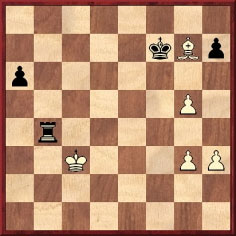
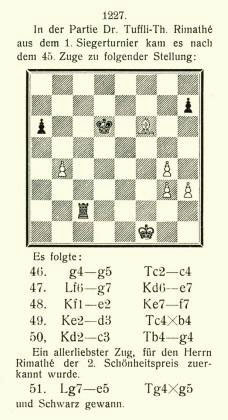
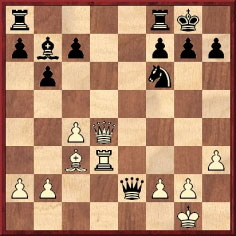


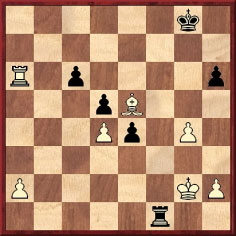


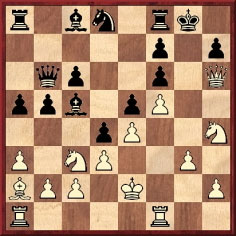

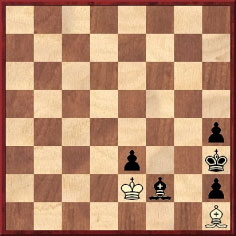





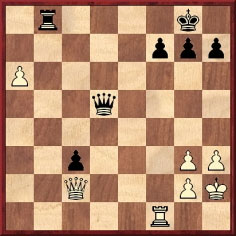
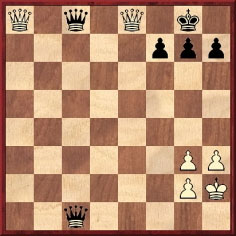
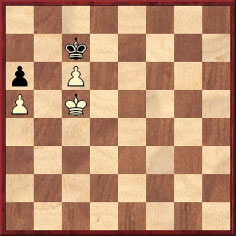


 Edward
Winter is the editor of
Edward
Winter is the editor of 




